With Sonic Unleashed’s release being on the same day as MonsterVine’s launch, we couldn’t resist writing about the history of one of the world’s most famous video game characters. It was the perfect opportunity to take a look back on the Sonic series, while we awaited the arrival of the newest – and promising – installment of the series. Hello, readers, I’m Gyuri, and this is MonsterVine’s Sonic the Hedgehog retrospective!
As we enter MonsterVine’s coffee dispensing time machine, we arrive in 1991, at Sega’s headquarters in Japan. Sega wanted a mascot character for their new console, the Sega Mega Drive (or Sega Genesis, if you prefer), to rival Nintendo’s mascot character, Mario. There were many ideas, but it was eventually Naoto Oshima’s character design, a spiky blue hedgehog, that was chosen to become Sega’s mascot. When Sonic’s character was named, the developer team consisting of programmer Yuji Naka, designer Naoto Oshima, game planner Hirokazu Yasuhara and others changed their name to Sonic Team and began working on the new mascot’s game, Sonic the Hedgehog.
Sonic the Hedgehog was released in the summer of 1991, and it became an instant hit. It was so popular, that the game eventually replaced Altered Beast as the game that was bundled with the console. The secret behind Sonic’s success was simple, yet ingenious, unlike other platformers, Sonic focused on speed. The player was encouraged to complete the stages as fast as he could, not only to get high scores, but by the level design as well, the levels were filled with slopes, springs and loop-de-loops, which were all there to encourage and challenge the player to reach high speeds. This was a completely new experience for gamers, we had never seen or felt anything like it in a game. Gamers enjoyed testing how fast they could go, and running never felt better, the physics in the game were so good that Sonic’s acceleration was dependent on things such as the steepness of the slope he was speeding on and whether he was underwater or not. Not only that, but the framerates were always stable, despite the newer before seen level of speed. It was the first time gamers experienced running around 360° loops, jumping over giant cliffs and speeding throughout a stage for no other reason than to feel the speed, and the excitement induced by the speed.
While running through levels was an important part of gameplay, it was not the only aspect. Sonic could collect golden rings (which would later become iconic to the series) to earn higher scores at the end of the level and to ensure his safety – as long as Sonic had at least one ring, a hit from an enemy would not hurt him, but only make him lose rings. Possessing a total of 100 rings gained Sonic an extra life and having at least 50 rings at the and of an act allowed players to access one of the Special Stages, where, if successful, the player would gain one of the six Chaos Emeralds. These emeralds were key to the storyline, although they did not serve much purpose in the game itself. According to the story, the evil Dr. Robotnik wants to collect the emeralds to rule the world, and Sonic must stop him, however obtaining the emeralds are not mandatory, obtaining them only results in getting the good ending. Sonic the Hedgehog’s biggest flaws was the lack of a saving and/or password system, while the game had checkpoints in each level, there was no way to save the game, and as such if the player turned off the console, he had to start the game from the very beginning.
Even though Sonic was originally released on the Sega Mega Drive, an 8-bit version was also released for the Sega Master System and the Sega Game Gear, with the gameplay based on the 16-bit version, although slightly different, due to the difference in the console’s power. The game, due to it’s popularity was also later released as a part of various Sonic and Sega game compilations, such as the Sonic Mega Collection or the Sega Genesis Collection, because of this, the game is available on a lot of newer consoles as well. The game also received a Gameboy Advance remake in 2006, titled Sonic the Hedgehog Genesis, which had an updated version of the original game, however the game turned out to be a failure – the slow framerate and glitches ruined the game and made it virtually unplayable.
As our readers take a breather, our time machine takes us to November 1992, the month when Sonic the Hedgehog 2 was released. Seeing the success of the first title, it was inevitable that Sega would develop a sequel, and thus came Sonic the Hedgehog 2, where Sonic returned to stop Dr. Robotnik from building a giant space station – the Death Egg.
Sonic 2 played almost identical to the first game, however it had quite a few improvements. While the levels were much bigger and had a larger variety of environments, the most significant improvement was the introduction of a second playable character, the two-tailed fox, Miles Prower, or Tails for short. With the second playable character came the two player mode, which allowed players to compete against each other, and although the two player versus mode occasionally suffered from slowdown and graphical bugs, and only had a few stages, it was still a feature players enjoyed and found to be a nice addition. The cooperative two player mode however was not so impressive, as the second player had no choice but to keep up with the first player, and if he went off screen, he would later automatically reappear, thus this mode did not offer complete freedom for the second player. Still, the mode was a welcome addition and considered a good first step.
There were other new features introduced to the series as well, the two most prominent being a new move, the Super Spin Dash, – a move that would then appear in every Sonic game released after Sonic 2, – which allowed the player character to spin in place before taking off at high speeds from a stationary start, and the other being the ability to transform into Super Sonic. In the original game, collecting the Chaos Emeralds did little to the gameplay, in Sonic 2 collecting all seven Chaos Emeralds via the special stages, and having at least 50 rings in Sonic’s possession yielded the ability of transforming into Super Sonic, a golden, invincible, flying variant of Sonic. This transformation would last until Sonic ran out of rings, meaning the form could be sustained till the end of the level. The Super Form pushed the speed limits even further, although Sonic became harder to control, and running out of rings at the wrong moment could prove fatal, players loved the Super Form – it opened a whole new level of speed, and players loved going at speeds they could hardly follow. It was evident, that this feature would stay in the Sonic franchise forever.
Sonic the Hedgehog 2 was a great success, being one of the highest selling Sonic games to date. Players and critics all loved it, and to this day Sonic 2 is often called by many the most memorable Sonic game ever made and had many rereleases on different consoles, mostly as part of compilation packs. It was obvious, that we haven’t seen the last of Sonic.
However, Sonic 3 was not the next game to be released in the series, instead there was another Sonic game that debuted roughly a year after Sonic 2. In Autumn, 1993, on the ill-fated Sega Mega-CD, gamers received a new Sonic game, titled Sonic CD. Sonic once again returned to stop Dr. Robotnik’s newest evil scheme, and he brought quite a bit of innovation with him.
The innovation in Sonic CD appeared as a method that allowed the player to travel through time. Thanks to the storage space of CDs, the developers could create three variants of each stage, Sonic started in the present, but he could access the past and future versions by passing signs reading either â€past†or â€future†and maintaning top speed for a short while. The different time periods weren’t just different by their names, the developers put a lot of effort into distinguishing each era, every era has slightly different layouts, different music, different art, and machines show signs of deterioration in later time periods. This was already impressive, however the developers didn’t stop here, they made it so that actions in the past affect the future, thus the future eras had two variants, a good and a bad one, depending on whether or not Sonic had taken out the hidden robot creating machine in the past version of the stage. Depending on whether Sonic saved the future or not, the player could receive different endings, the best one being achieved if Sonic saves each stage’s future and collects all seven Time Gems, this game’s version of the Chaos Emeralds. The game could also be saved for the first time in the series, and two new characters were introduced, Amy Rose, Sonic’s love interest and Metal Sonic, a robot duplicate of Sonic, created by Dr. Robotnik.
Sonic CD was received well by gamers and critics alike, and is often regarded as the best Sonic game ever made by fans. Despite this, due to the failure of the Sega Mega-CD, Sonic CD is also one of the most underplayed title of the series. The game was not without flaws though, while the different console offered many new things to the franchise, the Super Spin Dash was rather bad in this game. Not only did it require the player to stand still to perform it (like in Sonic 2), but players also had to wait about two seconds before Sonic executed the move, this made the game somewhat slower, and became very irretating for some players after a while. Also, Tails was not included in Sonic CD, which meant there was no two player mode either and for the first time in the series, the single player had occassional frame rate slowdowns, but nothing terrible. Despite it’s flaws, the game’s positive qualitites made it popular, and as I’ve said before it is often considered the best Sonic game ever made by fans. The game even recieved a PC port three years later and is part of the Sonic Gems Collection, available for the Nintendo GameCube, and the Playstation 2.
While Sonic CD was a major part of the series, it was never considered as a true sequel to Sonic 2. This was not due to it’s quality, but the fact that it was missing some functions Sonic 2 had, and that it didn’t seem to take place after Sonic 2. These were most likely because Sonic CD was in development at the same time Sonic 2 was, by a team that seperated from the Sonic Team. The â€true†sequel, Sonic the Hedgehog 3, arrived in stores in the spring of 1994, which favored the gameplay of Sonic 2, instead of Sonic CD.
Sonic 3 begins right where Sonic 2 left off – after Sonic defeats Dr. Robotnik in the Death Egg, it crashes into Angel Island, a floating island, where the Master Emerald, and it’s protector Knuckles the Echidna reside. Dr. Robotnik quickly tricks Knuckles into believing that Sonic is coming there to take his Emerald and they form an alliance, thus begins Sonic’s new adventure, where he must stop the doctor from repairing the Death Egg and retake the Chaos Emeralds, stolen from him by Knuckles.
Sonic 3 used a new game engine, based on the engine of Sonic 2. The new engine had it’s benefits: the levels were three times larger than in previous games, they had many new environmental elements to interact with, there were more bosses and the game’s speed was faster than the previous titles as well, without any slowdown in frame rates whatsoever. This was also the first Sonic title to offer multiple paths to take for different characters – Tails could use his tails to fly, thus reaching areas Sonic could not. This marked the beginning of the evolution of characters, with each character starting to develop unique abilities, creating a different experience for players of different characters.
Sonic 3 kept the gameplay of the previous installments, and didn’t have any radical changes in the gameplay itself, with the main goal still being the same as before – reaching the end of the stage as fast as possible. Everything from Sonic 2 was kept, and improved, including the two player mode, which now had a time attack mode and Knuckles as a playable character as well, although he didn’t have any unique abilities in this game. The game also kept the save feature of Sonic CD and was a little more plot-driven than the previous games.
Even though the game didn’t sell as well as Sonic 2, it was received well by fans and critics alike and because of it’s success Sonic 3 was also re-released for newer consoles, often as part of compilations. The game also introduced Knuckles the Echidna, a character who would stay in the series, and become the favourite character of many players. He, along with Tails and Sonic are considered by many to be the official trio of the Sonic series. Although Knuckles was introduced as a rival to Sonic, his role as a rival would later become overshadowed by Sonic’s rivalry with Shadow the Hedgehog.
Our next stop is only a few months later, in November, 1994, when the next main installment of the series was released: Sonic & Knuckles.
Sonic & Knuckles was released surprisingly early after Sonic 3, however the reason behind this is well known today: Sonic 3 and Sonic & Knuckles were originally planned to be one game, however time constraints forced the developers to split the game in two, and release Sonic 3 as a separate game, while continuing working on the unfinished levels. This was the right decision for the developers, despite the game being released in two parts, no known levels were lost, unlike in Sonic 2, where many levels were scrapped for similar reasons.
Sonic & Knuckles continued the story of Sonic 3. Following Dr. Robotnik’s defeat, the Death Egg once again became immobile, and as Dr. Robotnik was repairing it, he had decided to use the Master Emerald to power the Death Egg. He betrays Knuckles in order to steal the Emerald, and shortly after, Sonic, Tails and Knuckles team up to defeat him.
The basic gameplay of Sonic & Knuckles was mostly the same as Sonic 3’s, however there were changes. The most noticeable being that Tails was not playable in the main game, instead, Knuckles took his place. Also Sonic and Knuckles each had their own levels, and while the environments of the levels were the same, the layout and bosses were different, so playing as different characters equalled to playing different games, with the differences increasing as the player progresses. Apart from this, the style of play did not differ much from previous games, except that this game had no save function. Knuckles’ special abilities were also introduced, which included gliding, breaking certain objects, and climbing walls, making his game a little different from Sonic’s in terms of gameplay.
Despite that Sonic & Knuckles was just as good of a game as Sonic 3, the developers felt that they should make up for releasing the game in two parts. In order to do this, the developers created a unique lock-on technology. This allowed players to insert the cartridge of Sonic 2 or Sonic 3 on top of the Sonic & Knuckles cartridge, combining the elements of the two games. Sonic 1 could also be inserted into Sonic & Knuckles, however like any other Mega Drive game, it was not compatible, only allowing the player to play a secret minigame by pressing the A, B and C buttons together.
With Sonic 3 and Sonic & Knuckles combined, the player started playing the Sonic 3 levels, but when he reached the final level, the game continued with the levels of Sonic & Knuckles, as it was originally intended. The game changed it’s title screen to read Sonic 3 & Knuckles, and new features got unlocked. Tails and Knuckles became playable in both games, – opposed to Tails being playable in Sonic 3, and Knuckles being playable in Sonic & Knuckles – the save feature returned from Sonic 3 with more save slots, and the Super Emeralds made their debut. After collecting the seven Chaos Emeralds, it was possible to obtain seven Super Emeralds, gaining the player the ability to turn either Sonic or Knuckles into their Hyper Form. Tails could also collect the Super Emeralds, but did not gain Hyper Form, even so, the form was not very important, as it was excluded from all future Sonic games. The new stones made way for new endings, depending on the number of emeralds obtained, the player could achieve a total of nine different endings. When Sonic 2 was inserted into Sonic & Knuckles, the game’s title changed to Knuckles the Echidna in Sonic the Hedgehog 2, and replaced Sonic and Tails with Knuckles, allowing previously inaccessible areas to be explored, but disabling the options and versus modes, as well as making Sonic and Tails unplayable.
Following Sonic & Knuckles, Sega released one more Sonic game for the Mega Drive, Sonic 3D Blast. The game was not received well, while being one of the best looking Mega Drive games, it lacked the speed of previous Sonic games, was hard to control and offered a completely different style of play. The developers quickly realised, that this was not the way to go, and decided to try a different route. A new Sonic project, dubbed Sonic Mars and later Sonic X-treme, began development on the Sega Mega Drive, but was eventually shifted to the Sega 32X, after the development team realised they needed a stronger hardware for the game. With the Sega 32X failing commercially, Sega decided it would be best to change the plans and make the game for their upcoming console, the Sega Saturn.
The concept of Sonic X-treme was an extension of the previous games as a platformer. The game would have offered a completely 3D environment for the first time in the Sonic series, a fish-eye lens camera view and level rotation. The game’s main engine and boss engine were developed separately, and offered different styles of gameplay. The development went well, but the boss engine was slowly evolving into something very different from the main engine. When Sega of Japan representatives approached the developers in 1996, they were dissatisfied with the main engine of the game and requested the entire game to be made with the boss engine.
I won’t go into details, but in short, the Sonic X-treme Project’s team soon faced a time of development hell. Ideas and developers came and went, and in the end, Chris Coffin, one of the key developers of the game came down with pneumonia, partly because he had been overworking non-stop to meet the 1996 Christmas deadline. This was the last nail in the project’s coffin, the game was indefinitely delayed and later officially cancelled in 1997. Sega however needed a Sonic game for the Saturn, and having no other alternatives, ported Sonic 3D to the Sega Saturn. The Saturn never had it’s own Sonic game, apart from Sonic 3D it only received Sonic Jam, a compilation of the Mega Drive Sonic games and Sonic R, a racing game. Sonic was yet to make his 3D debut, and many fans considered this one of the major reason why the Sega Saturn was unsuccessful, seeing that Sony’s Playstation and the Nintendo 64 both had their definite 3D platformers.
The debut of the first 3D Sonic game would wait until the December of 1998 in Japan, and the Autumn of 1999 in the other regions of the world. These dates correspond to the launch of the Sega Dreamcast in each region, since the first 3D Sonic game, Sonic Adventure, was a lauch title for the Dreamcast.
The story of Sonic Adventure was much more deep than those of the previous games. It told the story of the Chaos Emeralds’ origin, the creation of the Master Emerald by the echidna tribe and the sealing of a powerful guardian spirit named Chaos (the seven emeralds were named after him) into the Master Emerald. Dr. Robotnik, who was now called Eggman in the Western versions of the game as well, (in Japan, he has always been called Eggman) learned of Chaos and released him in order to use his powers to gather the Chaos Emeralds and rule the world. Of course, Sonic and his friends set out to stop him. In addition, this was the first main game in the series where the characters were truly given unique personalities. For example, while we always knew Knuckles was a bit naive and short-tempered, this was the first main game to truly show those traits of his.
Now that we’re talking about characters, let’s take a look at the character roster. The game of course had the classic trio of Sonic, Tails and Knuckles, but there were new characters and returning characters as well. Among the playable characters were Sonic, Tails and Knuckles, as well as Amy Rose, Sonic’s love interest, who was previously seen in Sonic CD, and two new characters: Big the Cat, a cat who loves fishing and E-102 Gamma, one of Eggman’s robots, who gained a conscience after an encounter with Amy. On the non-playable characters’ side, we had Dr. Eggman along with his robot Zero and the rest of the E-Series robots that Gamma was a part of. Chaos, the previously mentioned guardian spirit and the mysterious Tikal the Echidna were introduced as new characters, along with the Chao, which were little lifeforms that could be raised as part of a Tamagotchi-like minigame. All the returning characters were redesigned for this game, but with no radical changes made to their original design.
The gameplay of Sonic Adventure was quite different from previous Sonic games, however the basic premise of finsihing the level as fast as possible to get higher scores remained.. First off, there were two types of stages: Action Stages and Adventure Fields. The previous Sonic games were divided into Zones and Acts, with Zones having multiple acts. In Sonic Adventure, the Adventure Fields were basically the Zones, however these areas were playable, and not just titular like in previous games. These areas were made for exploration, minor puzzle solving and plot advancement, hosting very little amount of enemies and items. The Action Stages were like the Acts of the Zones, these were the areas where the player controlled one of the six playable characters and played in their own gameplay style.
The six playable characters all had different styles of gameplay. Sonic’s levels maintained the high speed gameplay of the previous installments, only in 3D. Tails’ levels were also speed based, however his goal was not only to reach the end of the level, but to reach it before Sonic or Eggman does. This meant that unlike Sonic’s levels, where the players goal was to reach the end as fast as possible, the main goal of Tails’ stages were to beat the opponent in a race. Knuckles’ levels involved using his special abilities of gliding and wall-climbing to search for collect the shards of the broken Master Emerald in enclosed areas, making his levels stray the farthest from the original gameplay style of Sonic the Hedgehog out of the classic trio. Amy’s levels were speed based as well, however her goal was to escape from Zero, Eggman’s robot. She also had her Piko Piko Hammer, previously seen in the arcade game Sonic Fighters, which she used as a weapon. Big’s levels were very different from the other ones, and had the least relation to the original speed-based gameplay. The goal of the levels were to catch Big’s friend Froggy, by fishing. In Gamma’s levels the player had to reach the target of the level and destroy him before time ran out, with time bonuses given for defeating multiple normal enemies in a row. With different stories for each character, the player experienced different points of view depending on which character he controlled.
One more thing worth mentioning about Sonic Adventure’s gameplay would be the role of Super Forms and Chaos Emeralds. Sonic Adventure no longer has Super Forms for Tails or Knuckles – or any other new playable character. Sonic is the only one who has a Super Form, and even he can only use it against the final boss of the game. Starting with Sonic Adventure, all main 3D Sonic games gave a more important role to the Super Forms. The Chaos Emeralds were no longer obtainable during gameplay, instead they were obtained as part of the storyline. By the end of the game, the emeralds were generally brought together, and Sonic used them to transform into Super Sonic and face off against the final boss. Instead of not having much significance, the Super Form became part of the plot, generally being regarded as an incredibly powerful form, not just a booster of Sonic’s abilities. The transformation was required in order to save the world, and unlike in the Mega Drive games, where the Super Form was a bonus, there was a part in most future 3D games where the player had to use the Super Form as part of the story, generally in the final level. Another thing worth mentioning, is that starting from this game, non-hedgehog characters were rarely given Super Forms, making them become mostly exclusive to hedgehogs.
Sonic Adventure was received well by gamers, the players found the game quite fun, and (despite the changes) considered Sonic’s transition to 3D a good one. Of course it was not perfect, many gamers didn’t like the lack of a multiplayer feature and also weren’t fond of not being able to play as their favourite character in different gameplay modes (such as not being able to play as Knuckles in a speed-oriented level). This was of course a matter of preference, other gamers considered it an improvement that each character had different gameplay styles suited to their abilities. The lack of Emerald collecting and the free usage of the Super Form was also disappointing for some players. Some gamers also found the Adventure Fields to be pointless time wasters that get in the way of the action.
In terms of sales, the game fared well, Sonic Adventure is the top selling Dreamcast game. An enhanced version of the game was later ported to the PC and Nintendo GameCube in 2003 under the title Sonic Adventure DX: Director’s Cut, which included a new mission mode and 12 unlockable minigames, which were Sonic games previously released on the Sega Game Gear. Despite the new features, these versions were less successful than the original.
Sonic Adventure’s success prompted Sega to continue the series in the game’s style, and began development on the sequel to Sonic Adventure. The next installment, Sonic Adventure 2, hit store shelves June 2001, ten years after the original Sonic the Hedgehog.
The game’s plot involved Dr. Eggman discovering his grandfathers, Dr. Gerald Robotnik’s journal and learning of an ultimate weapon he developed. Eggman breaks into a high-security facility maintained by the government’s G.U.N. federation (a peace keeping unit to put it simply), and steals this â€weaponâ€, who is non other than Shadow the Hedgehog, the ultimate life form. Shadow plans to avenge the death of Gerald Robotnik’s granddaughter Maria, and teams up with Eggman to activate the Eclipse Cannon aboard the Space Colony Ark and destroy the Earth with it, unless Eggman is made ruler of the world. Sonic gets involved in the matter when G.U.N. mistakes him for Shadow, and captures him. He is broken out of custody by Tails and they, along with Knuckles head off to stop the doctor’s plan.
The gameplay of Sonic Adventure 2 is based on the gameplay of it’s predecessor, with the playable characters having different styles of gameplay. However, in Sonic Adventure 2, there are only three types of game modes to play and six playable characters: Sonic, Tails, Knuckles, two new characters, a thief named Rouge the Bat, and the previously mentioned Shadow and last, but not least, for the first time in the series, Dr. Eggman. So how did it work then? Each gameplay style had two playable characters, a Hero character and a Dark character. Sonic Team USA’s main idea was to make the villains playable as well, allowing the player to experience both groups’ story and point of view. Thus, there were two separate storylines: a Dark story and a Hero story, and by beating both, the player unlocked the last story, which was the final part of the game, leading to the game’s ending. There was also a secret unlockable level in the game, which was a 3D remake of the original Sonic the Hedgehog’s Green Hill stage.
Sonic and Shadow’s stages were classic speed-oriented levels, similar to those of Sonic Adventure. Knuckles and Rouge’s stages were similar to Sonic Adventure as well, with the primary goal being to locate the shards of the Master Emerald. Tails and Dr. Eggman’s stages involve the two characters using robot walkers to blast their way to the end of the levels, somewhat similar to Gamma’s stages in the previous game. Also, like in Sonic Adventure, there were playable stages with Super Sonic and Super Shadow at the end of the game.
Sonic Team heard the complaints of Sonic Adventure’s lack of a multiplayer mode, and created a two player mode for this game, featuring additional characters: Amy Rose, Metal Sonic, Chaos, Tikal the Echidna, Big the Cat (only in the Dreamcast version) a Chao and a Dark Chao (only in the GameCube version). The stages played the same way as in the single player game, with Sonic, Shadow, Amy and Metal Sonic racing, Tails, Dr. Eggman, Chao and Big (or Dark Chao) having a shootout, and Knuckles, Rouge, Tikal and Chaos hunting for emerald shards.
The game was a great success, and while it didn’t sell as well as it’s predecessor, gamers found it to be the better than Sonic Adventure. Everything was the same, except what was criticised in Sonic Adventure: Adventure Fields were removed, along with the characters who weren’t speed oriented (Big, Gamma) and the remaining levels became more speed-oriented even if the goal wasn’t simply to reach the end of the level. Players also liked the two new characters – particularly Shadow, who brought a bit more maturity to the series with his anti-hero personality– who remained in the series after this game. The success of the title led to the creation of Sonic Adventure 2 Battle, an updated version of the game, released eight months later. It was the first Sonic title to be released on a Nintendo console (it was actually released a little earlier than the GameCube port of Sonic Adventure). This updated version made small changes to the multiplayer mode, switching Big with Dark Chao, and adding a new kart racing mode, along with other small changes. Despite being an updated version, with no changes made to the single player, this version fared worse in terms of reviews.
Sonic was reborn in 3D on the Dreamcast. Things seemed to be going well for the blue hedgehog, however, as we know the Dreamcast soon met it’s demise, and while Sega didn’t leave the games industry, they never made a new system. Sonic, with no system to back him up, soon became a multiplatform title, with Sonic Team developing all sorts of Sonic games for various consoles. The first step in this was the porting of Sonic Adventure 1 and Sonic Adventure 2. Thanks to this change, the next main installment of the series, called Sonic Heroes also became a multiplatform title.
Sonic Heroes arrived in Japan on December 30th, 2003 on the Playstation 2, Xbox and Nintendo GameCube, with the North American, Australian and European releases soon following in the January and February of 2004. A PC version was also released at the end of the same year. The game’s director Takashi Iizuka didn’t want to make Sonic Heroes as another Sonic Adventure title, because he was afraid the game would only be bought by Sonic fans and core gamers, stating that he wanted to create something that new gamers could easily adapt to.
Sonic Heroes had a different setup from previous games. This time, there were four teams, each with their unique subplot to follow, although all roads eventually lead to stopping Dr. Eggman from achieving world domination. These four teams were of course made up of the playable cast, each team having three members. The teams were: Team Sonic, Team Dark, Team Rose and Team Chaotix. The story of the four teams were different, yet intertwined.
Since there were so many characters, let’s take a quick look at who compromised which teams. Team Sonic’s members were of course Sonic, Tails and Knuckles. Team Dark was made up of the anti-hero type characters, Shadow, Rouge and the newly introduced robot E-123 Omega. Team Rose’s members were Amy and Big who we’ve met before, and Cream the Rabbit. Cream was introduced on a Gameboy Advance spin-off title, Sonic Advance, and this was her debut in the main series as a playable character. Cream’s chao, Cheese was also constantly following Cream. The last team, Team Chaotix was compromised of the quiet Espio the Chameleon, the airhead Charmy Bee and their headstrong, music loving leader, Vector the Crocodile. These characters weren’t entirely new either. While this was the first main game they were part of, they were originally introduced in a spin-off title called Knuckles’ Chaotix, made for the Sega 32X. In case you’re wondering, I’ll deal with these spin-off games later in the retrospective.
The gameplay of Sonic Heroes was a return to the 2D roots of the series with a couple of new elements added. The levels were much more straightforward than in Sonic Adventure 2, with the goal being to just complete the level as fast as possible. The new elements came with the team based gameplay – instead of controlling one character, the player controlled three, and could switch between them as necessary, with the two support characters following the one controlled by the player. All three characters had different abilities, or classes, each team had a â€speed†character for fast stages, a â€flight†character for flying for reaching high platforms and a â€power†character who could break objects. For example, in Team Sonic, Sonic was the fastest, Tails could fly, and Knuckles could break large objects. These were represented with three colors in the interface, blue for speed, yellow for flight and red for power, the colors obviously taken after the colors of Sonic, Tails and Knuckles. The characters could temporary gain two levels in each stage which increased their efficiency against enemies. Each team also had a Team Blast attack, performable once the Team Blast gauge is filled by collecting rings and defeating enemies.
Sonic Heroes wasn’t as well received as the Adventure titles. Gamers liked the simpler gameplay, claiming it was a better transition of Sonic to 3D than the previous two 3D games, since it was closer to the roots of the series. However, the camera was often uncooperative, giving a harder time for gamers to properly position their characters for jumps and such, and also slowed down the gameplay. The camera and voice acting were considered the worst aspects of the game. Still, the game fared well in sales, becoming a best-seller and receiving greatest hits editions on all three consoles.
Before we fast forward another year with our time machine, let’s talk about a certain black hedgehog. Shadow, who was the first anti-hero type character introduced to the series quickly gained popularity among fans. Shadow brought a bit more maturity to the series, and made it a bit darker as well, these, coupled with the fact that he was Sonic’s rival in speed and his special abilities like Chaos Control, were no doubt the reasons why he gained may fans. In 2005, during Sonic’s inauguration into the Walk of Game (the gaming equivalent of Hollywood’s Walk of Fame) a new Sonic game was revealed, staring Shadow, under the title Shadow the Hedgehog. With this, Shadow now had his very own video game, which was the first post-Sonic Adventure game to not feature Sonic’s name in the title, the first Sonic game to have an E10+ rating and the last main Sonic game developed in America before Sega Studio USA was absorbed back into the Japanese division.
Shadow the Hedgehog was released at the end of 2005 for the Playstation 2, Xbox and Nintendo GameCube, continuing the story of Sonic Heroes. After presumed dead in Sonic Adventure 2, Shadow returned with amnesia in Sonic Heroes and still suffers from the condition in Shadow the Hedgehog. The storyline revolves around Shadow and his past, with the storyline being affected by the players actions. Since Shadow was an amnesiac anti-hero, he didn’t align himself with anybody initially, it was up to the player whether he became a hero or a villain. Depending on the player’s actions, there were 10 possible endings to achieve.
The game played similarly to the previous 3D Sonic titles, with the exceptions that Shadow was given missions to complete, which meant that not all levels were about reaching the end, but about completing a certain task for either the Hero side or the Dark side. Since the missions were separated to two sides, and Shadow could work for and switch to whichever side he wanted, and even remain on the neutral side, there were a lot of different path to take in the game.
On the other hand, Shadow the Hedgehog was quite different from the previous titles. Not only was it a lot darker, but Shadow could also use weapons and ride vehicles. While these were not mandatory to use – as Shadow could run faster than vehicles and had his own attacks – they had abilities Shadow himself didn’t have, for obvious reasons.
Shadow the Hedgehog came under a lot of criticism. The game was labelled as a sellout for changing the tone of the series and for the usage of weapons and vehicles. Gamers – despite the vehicles and weapons not being mandatory to use – felt they were unnecessary additions that Shadow wouldn’t even need. While undeniably true, all things considered it didn’t ruin the game as much as some reviewers and hardcore fans noted, partly because the player didn’t have to use them if he didn’t want to. Shadow the Hedgehog looked and played very similarly to the previous games, only with more replay value, and while it didn’t fare well with critics, the public generally considered it an above-average game. Looking at it as objectively as possible, Shadow the Hedgehog’s overly negative criticism mostly came from being vastly different from previous games in terms of atmosphere, rather than the game’s actual flaws. Even with all the criticism, the game was still a moderate success. An interesting fact I feel like noting, is that Shadow the Hedgehog was censored slightly to make it more child-friendly. It was a typical example of overcensoring for the sake of keeping the E10+ rating. The changes were small, but that is the point, changing â€hell†to â€heck†or â€piss off†to â€tick off†or changing the blood color to green isn’t what I would call necessary or even worthwhile censorship.
Shadow the Hedgehog concludes an era in the Sonic franchise, as it was the last game to be released on the systems of the Playstation 2-Xbox-GameCube generation. The next game in the series was released on two of the next generation consoles, the Playstation 3 and the Xbox 360. The game which was meant to be the celebration of the Sonic franchise’s 15th anniversary, received the title Sonic the Hedgehog, and despite it’s name it was a brand new game in the series, not a remake. It was released late 2006 for the Xbox 360 and early 2007 for the PS3.
The story took place after Shadow the Hedgehog and was once again pretty convoluted, and each of the three main characters had their own storyline. The three main characters were Sonic, Shadow and the newly introduced Silver the Hedgehog, who came from the future to try and save the world from disaster. There were three main villains, one for each character: Sonic’s nemesis was Eggman, Shadow’s ultimate enemy was Mephiles the Dark, and Silver’s main enemy was Iblis. The story played similarly to Sonic Adventure 2, the last part of the story was accessible only after beating all three characters’ stories. In this part, the three hedgehogs teamed up to defeat the final boss of the game, Solaris.
Apart from the villains and some series-wise minor characters (for example Princes Elise) the game introduced a new characters: Silver the Hedgehog who also had a partner, Blaze the Cat. Blaze was introduced in the spin-off game, Sonic Rush, and this was her first time as a character in a main title. Both would remain part of the series, in fact Silver is one of the main characters in Sonic the Hedgehog as I’ve said before, and as the other two male hedgehogs he to has a Super Form. Blaze was later established in spin-off games as a fire-controlling princess of the alternate dimension he and Silver came from, and revealed to have a Super Form named Burning Blaze she can access by utilizing the power of her dimension’s Sol Emeralds.
The gameplay was pretty similar to previous 3D titles, keeping the basic elements of previous titles. The Adventure Fields of Sonic Adventure made their return, renamed as Town Stages and with them came Action Stages. While each character played through the same levels, their unique abilities allowed them to access areas the others could not and take different paths. Sonic had high-speed levels, Shadow could use Chaos powers, homing attacks and vehicles and Silver could use telekinesis and hover in the air. The game also had two multiplayer modes, the Tag Mode, which featured cooperative play, and Battle Mode, which had two players race against each other.
Sonic the Hedgehog, in terms of sales was a disaster. Not only that, but it was considered bad by both critics and gamers, gamers found it to be hard to control, unfairly difficult, full of glitches, making it feel unfinished and these factors ultimately ruined the game’s fun factor. Sega claimed these were the results of the developer team being under a lot of pressure to meet the Christmas release. Because of the failure of the game, fans like to consider it a spin-off title.
Well, that concluded the main series. The upcoming Sonic Unleashed will be the next installment in the main series. However, this article is not over yet. It’s time to go over the spin-off games, although I won’t go into details as much as I did with the main series. Get ready dear readers, we’re travelling back to the past, yet again.
First off, before we get into the spin-off games, let’s get four games out of the way. These games were all arcade games. These are: SegaSonic Cosmo Fighter and Waku Waku Sonic Patrol Car two Sonic games that combined the idea of kiddie rides with video games. The other two were the platformer SegaSonic the Hedgehog, and the fighting game Sonic Fighters. These were all released in the early and mid 1990’s and none of them are really important. Sonic Fighters was going to be released on the Sega Saturn, but it was eventually cancelled.
With those out of the way, let’s talk about the â€proper†spin-offs. The first Sonic games that can be considered spin-offs are Sonic the Hedgehog 1 and 2 for the Sega Game Gear and Sega Master System. These were the 8-bit versions of Sonic 1 and 2, featuring similar gameplay, but different stages and slightly different game mechanics. Sonic 1 was released in 1991 and Sonic 2 was released in 1992. There was also a puzzle game, Sonic Eraser released for the owners of Sega Meganet in Japan, however this had little connection to the series.
The next spin-off title was released in 1993, titled Sonic Chaos. It was a sequel to the previous two 8-bit games and introduced Tails as a playable character to the handheld series. In this game Sonic got a new move, the Strike Dash, which was similar to the Spin Dash. This move was also included in Sonic CD, but was missing from a lot of other titles. This game had a sequel in 1994 titled Sonic Triple Trouble, which improved on Sonic Chaos and was exclusive to the Game Gear.
Next up are five, mostly irrelevent Sonic titles: Sonic the Hedgehog Spinball, released 1993, and as it’s name implies, it was a pinball game for the Sega Mega Drive, and later ported to the Game Gear and Sega Master System. The next is Dr. Robotnik’s Mean Bean Machine, also released in 1993 for the same platforms as Sonic Spinball. This game was just a modified version of the Japanese puzzle game Puyo Puyo. The other three were Tails and the Music Maker and Sonic’s Schoolhouse, two educational games and Sonic Gameworld, a party game, all for the Sega Pico.
Back in the day, the Sega Game Gear was the primary platform for Sonic spin-off titles, as we could see from all the spin-offs on it. The Game Gear had another five spin-off titles for it: Sonic Drift 1 and 2 were racing games released in 1994 and 1995, Tails’ Skypatrol, a terrible platformer starring Tails, released in 1995, Tails Adventure, a side-scrolling action RPG, and Sonic Labyrinth, a terrible puzzle platformer.
The first spin-off game that is truly worth mentioning, is the Sega 32X’s only Sonic title, Knuckles’ Chaotix, released in 1995. This was the game the Chaotix debuted in, a group of four members, Mighty the Armadillo (who hasn’t appeared in a Sonic game since this one) and the ones who made up Team Chaotix in Sonic Heroes, Vector, Espio and Charmy. The game was similar to the Mega Drive Sonic titles, but it had one unique gameplay element, which ironically was also the most criticised element of the gameplay. This feature was a special ring force bond between two characters. Two characters were on screen simultaneously and were controlled by the player or players and together they could execute special moves using the ring bond’s powers. While Knuckles’ Chaotix was not a groundbreaking success, it’s still regarded as one of the better spin-off Sonic titles and one of the better games for the 32X. An interesting sidenote: a prototype Sonic title, Sonic Crackers’ was the basis for Knuckles’ Chaotix. The elastic ring power was first seen in the beta of that game.
The next spin-off title, is the already mentioned Sonic 3D Blast released in 1996, which played from an isometric viewpoint in a 2D environment, with pre-rendered 3D sprites. The point of the each level was to gather the required amount of little creatures called Flickies and thus advance to the next level. Like most Sonic spin-offs, this game was not a success either, suffering from clunky controls and slow gameplay.
Another game, Sonic Blast was released for the Game Gear in conjunction with Sonic 3D Blast, however despite the similar titles, they had little in common. It used rendered character models, making them look a lot better than in the other Game Gear Sonic games. The game had two playable characters, Sonic and Knuckles, played similarly to Sonic Triple Trouble, and was the last Sonic game released for the Game Gear.
Next up is the only Sega Saturn exclusive Sonic game, Sonic R. Sonic R was a racing game, featuring a total of 10 characters. It isn’t well known, partly due to the failure of the Sega Saturn, but mostly because it didn’t have anything that made it stand out. It is largely overlooked by fans.
The next on our seemingly never ending list of Sonic games is Sonic the Hedgehog Pocket Adventure, a Neo Geo Pocket Color exclusive Sonic game. It was the first original Sonic game to be released on a non-Sega console, although Sonic Jam – a compilation pack containing the four 2D Mega Drive games – was ported to the Game.com before it. This game played very similarly to Sonic 2, with added multiplayer options and puzzles. It was the last Sonic game until Sonic and the Secret Rings where Sonic was the only playable character.
The next spin-off Sonic game to come out was Sonic Shuffle, on the Sega Dreamcast in 2000. It was a party game, featuring a variety of minigames. Like many other Sonic spin-offs it was nothing special, with critics and fans alike criticising it for many reasons. It was not a Sonic game to remember…
…unlike the next spin-off game on our list! Sonic Advance was released for the Gameboy Advance in 2002. It received a lot of attention, because it was the first original Sonic game that appeared on a Nintendo system. The game was very similar to the 2D Mega Drive Sonic games, in fact, with the exception of the Tiny Chao Garden area everything played the same as the first four Sonic games, offering four playable characters: Sonic, Tails, Knuckles and Amy. The game was a success, although it played a bit slower than the Mega Drive games. A sequel soon followed in 2003, named Sonic Advance 2. This game was an improvement in every aspect: it was bigger, faster, more controllable, and had new special moves for every character, usuable when flying through the air, while not being curled up in a ball. The characters could even shatter the sound barrier if ran fast enough, leaving afterimages behind them and being able to run on water. Cream the Rabbit also debuted in this game, as the fifth playable character alongside the original four of Sonic Advance. Thanks to the success of the two games, it didn’t take long for Sega to develop another sequel, Sonic Advance 3, which was released in 2004. It played similarly to it’s predecessors, being improved in many aspects. A new Tag Team function was introduced to the game as well. At the beginning of each Zone, the player chooses two characters to control. The support character follows the main character (like Tails followed Sonic in Sonic 2) and together they can perform special moves called Tag Actions. Different teams could perform different moves, and there were five characters to choose from, the same five that were present in Sonic Advance 2. This game is regarded as the best of the three Sonic Advance titles, while the three Sonic Advance games are all considered to be among the better spin-off Sonic games.
In 2003 Sonic Team released another Sonic game, Sonic Pinball Party on the Gameboy Advance as a celebration of sorts. It was a simple pinball game, with guest appearances from other Sega franchises. Not the most important game in the franchise, but it still fared quite well.
Next up on our list is Sonic Battle, a fighting game released for the Gameboy Advance in 2004. It put the characters into a 3D arena, where they had to fight each other. There were many cutscenes between the fights, making this game very plot-driven. There were ten playable characters: Sonic, Tails, Knuckles, Shadow, Amy, Rouge, Cream, Chaos, Gamma and the new character who the plot revolved around, Emerl. Emerl was a weapon, like Shadow, only older and robotic. The game had a skill learning system implemented, which was all about making Emerl learn new attacks and costumizing his abilities. The game also had five minigames and was surprisingly well received.
Sonic Advance was a successful series, as I mentioned before, however it only had three installments. This was because of the release of the Nintendo DS, which had a new Sonic game made for it, which succedeed Sonic Advance. This was Sonic Rush, released in 2005. Sonic Rush was basically and improvement of Sonic Advance 3, with the Tag Team system ditched, and the introduction of Blaze the Cat, a new character. A new Tension Gauge was also introduced, which could be filled by defeating enemies and using the â€stunt†moves introduced in Sonic Advance 2. Sonic Rush was very well received, similarly to the Advance games, and had a sequel made for it, called Sonic Rush Adventures, released in 2007. It was similarly well received and improved on all the aspects of Sonic Rush, with no key differences made to it. The biggest flaw in these games was considered by fans to be the lack of classic playable characters, as only Sonic and Blaze were playable.
The Sonic franchise had a few installments that were racing games, however, the most well-known one, Sonic Riders, was released in 2006 for the Playstation 2, Xbox, GameCube and PC. It was the most well-received racing Sonic title at the time of it’s release, however it was still nothing more than an average game. Sonic Riders also had a sequel for the Playstation 2 and Nintendo Wii released in 2007, titled Sonic Riders: Zero Gravity, which tried to improve upon it’s predecessor with new functions, but ultimately failed. After Sonic Riders came out, another racing Sonic game made it’s debut, titled Sonic Rivals. It was released in 2006 for the Sony PSP and was a mix of a racing game and platformer. Similar to Sonic Riders, it was a moderate success, but it did become the most well recieved racing Sonic game. It had a sequel, Sonic Riders 2, released in 2007 for the PSP, however it was even less of a success than it’s predecessor.
Another Sonic game, Sonic and the Secret Rings also hit stores’ shelves in 2007, developed exclusively for the Wii. This game was a departure from the style of the previous 3D Sonic games. It was a fantasy game, where Sonic had costumisable skills, and had three modes playable: Adventure Mode, the multiplayer Party Mode and Special Mode, where the unlockable items could be viewed. This game was not a success and had low ratings, however a sequel titled Sonic and the Black Knight is in the works right now for the Wii, set to be released early 2009.
The last, and newest Sonic spin-off game is Sonic Chronicles: The Dark Brotherhood, a role playing game developed for the Nintendo DS, released just a few months ago, in September 2008. Despite the skeptic approach of gamers (which was due to the game being an RPG) it actually fared quite well with critics and gamers. This game was actually developed by BioWare, who had a lot of experience with role playing games. The game was a success, and with all the game’s flaws, it was praised for being better than anyone expected.
Before we finish, there is one last game I feel I should mention. This is of course Nintendo’s and Sega’s joint project, a sports party game developed for the Nintendo Wii and Nintendo DS, Mario & Sonic at the Olympic Games. It was released in 2007, and while it did receive the award for the Best Wii Game of 2007 at the Leipzig Games Convention, it wasn’t praised by gamers or critics. The game was average, and the main reason for it’s success was more because the fact that it brought two old rivals, Mario and Sonic into one game. It had a few good ideas and fun games, but ultimately, it wasn’t as good as people thought it to be.
Sonic the Hedgehog is a series that has been through good and bad. As this retrospective shows, Sonic has a large history in the video game industry, with more games released than how many is worth counting. Sonic has left his mark on video gaming forever, and even today, where Sonic is not that big of a name anymore, and his games are not be as great as they were, he lives on. The passion of the fans never seems to go away, as they keep looking forward to every Sonic game that is announced, even despite the failures of many Sonic titles. Sonic, the character has also become an icon of gaming, appearing in cameo roles in other games (such as Super Smash Brothers Brawl), and having many merchandise made after him, such as T-shirts and toys. Sonic also had his own animated TV series and comics.
As I finish up this retrospective, and you, the reader, exits MonsterVine’s time machine, I share my final thoughts with you. Sonic may not be as big of a name as he was before, but he still manages to deliver us gamers good fun, and I hope that Sonic Unleashed will live up to people’s expectations and us gamers will have just as much fun as we had when we first met Sonic on the Sega Mega Drive.
Goodbye readers, until next time! Happy gaming!
Gyuri


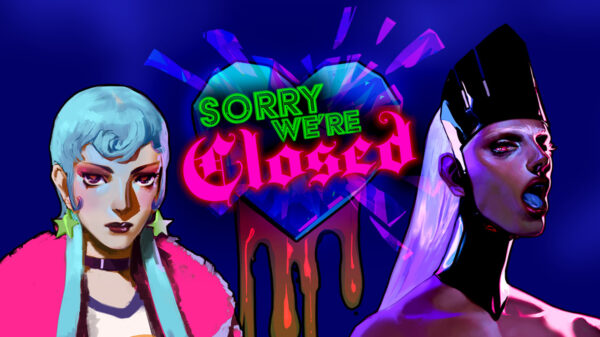
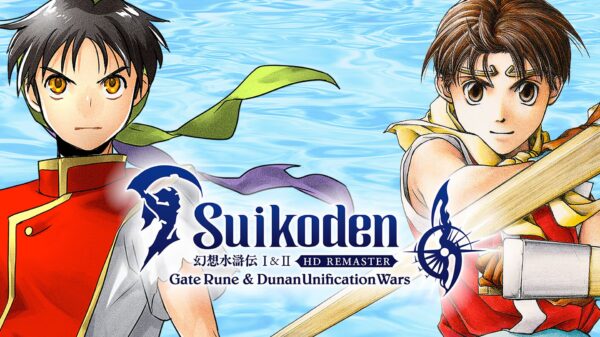




























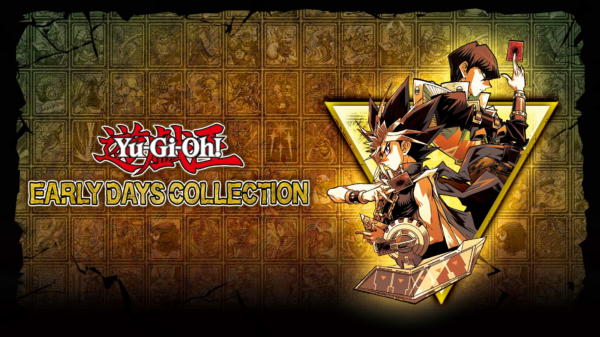



























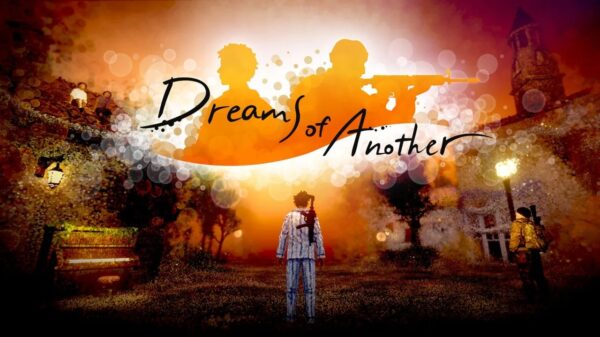

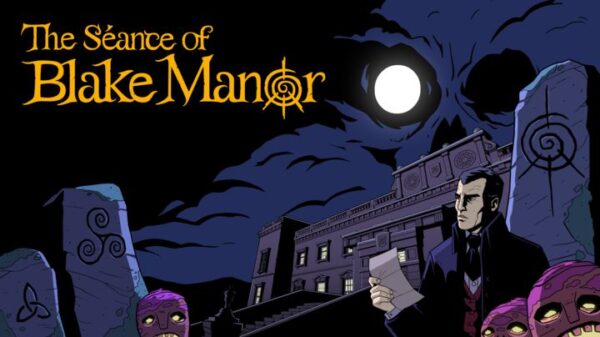









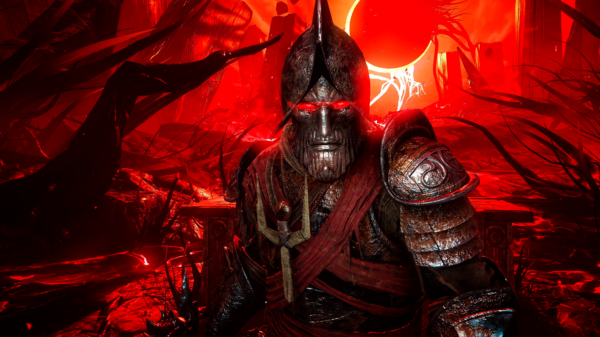

























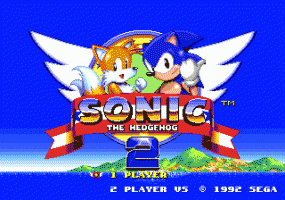
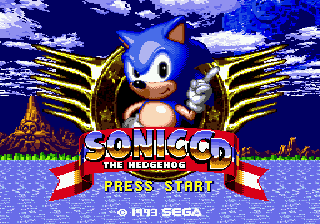
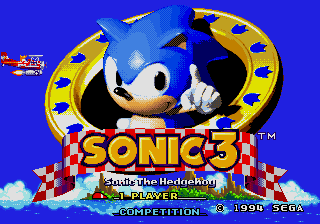
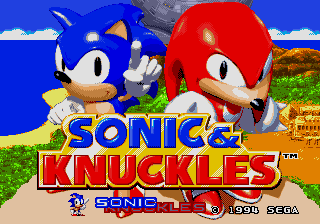

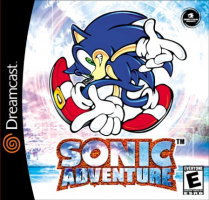

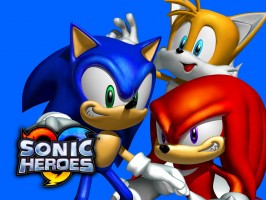
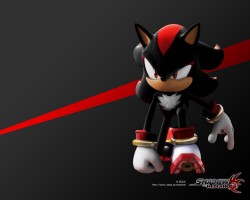
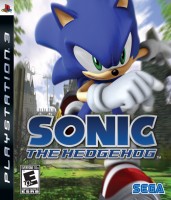


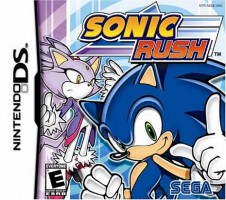

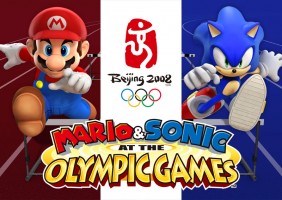
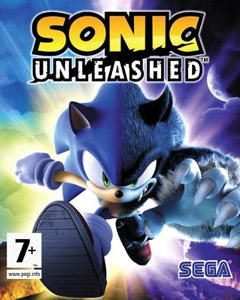
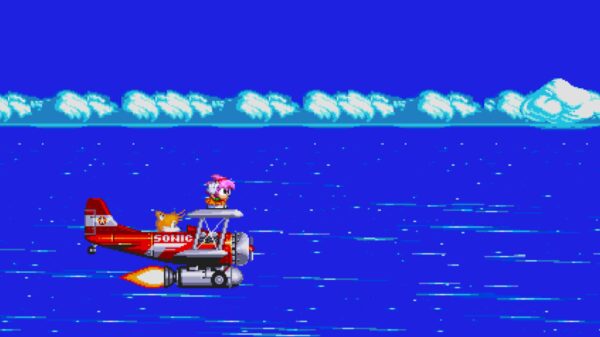
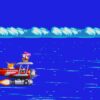
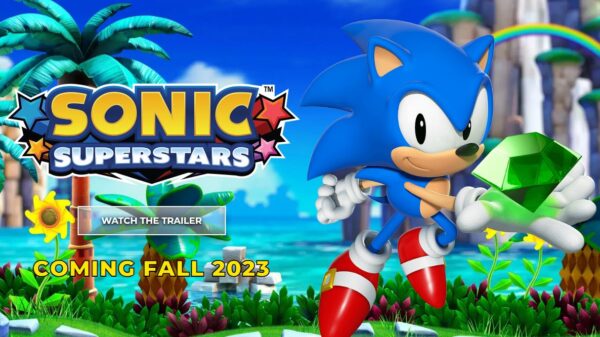

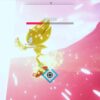
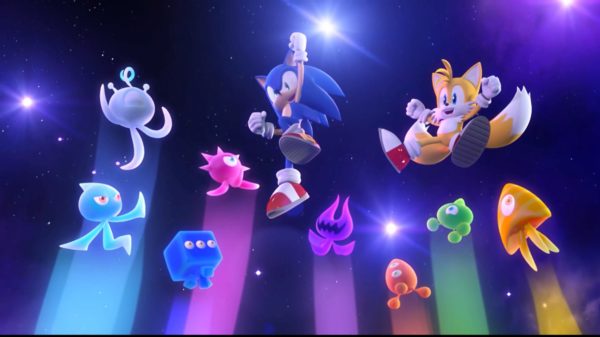
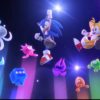

William
November 18, 2008 at 7:39 am
I can fix that up for you if you need it.
Gyuri
November 18, 2008 at 7:12 am
Sorry for the lack of pictures, but they kept screwing up the article and I couldn't find a solution to the problem. In the end I only used these two, because they didn't mess it up. I'll clean out the gallery of the unused pictures tomorrow.
Gyuri
November 19, 2008 at 4:43 am
Thanks man, I owe you one.
Pingback: Punch and Pie | MonsterVine
Pingback: Sonic Generations Demo Out Now | MonsterVine - Monster Video Games Coverage